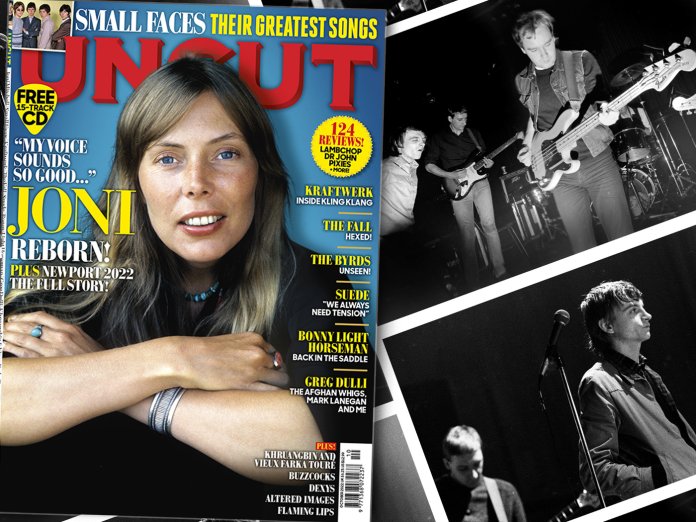In 1981, Mark E Smith led The Fall to the USA, Iceland, and Hertfordshire – and onwards into the gritty, detailed landscape of their 1982 masterpiece, Hex Enduction Hour. Band members and close associates tell Uncut how The Fall grew in scope and power as a two-guitar/two-drummer lineup, and prope...
In 1981, Mark E Smith led The Fall to the USA, Iceland, and Hertfordshire – and onwards into the gritty, detailed landscape of their 1982 masterpiece, Hex Enduction Hour. Band members and close associates tell Uncut how The Fall grew in scope and power as a two-guitar/two-drummer lineup, and propelled Smith’s transformative visions of modern culture to greatness. “We knew there was no other band on Earth like us at that point,” In the latest issue of Uncut magazine – in UK shops from Thursday, August 18 and available to buy from our online store, Marc Riley tells John Robinson. But could it last?
Summer–autumn 1981. The Fall and producer/sound engineer Grant Showbiz tour the United States. Drummer Paul Hanley (17) is too young to play American clubs, so remains in the UK. He is replaced by 1978’s Fall drummer Karl Burns. On returning, the band keep both players and travel to play (and record two songs) in Iceland.
Grant Showbiz (sound engineer/producer, Dragnet; co-producer, Slates; Hex Enduction Hour): Coming down those steps at JFK the first time, seeing New York, as ludicrous as it may seem, it felt like we were in The Beatles, in my mind. It was astonishing that we got there. Did we even have guitars? I think we turned up and borrowed shit.
Steve Hanley (bass, 1979–1998): That was quite a long, intensive tour – a lot of driving. We were fans of The Fall before we joined, so to play with Karl was a great thing. Karl had an effect on my playing. He knew how to build a song up and take it down again. The rest of us were just learning our instruments. He could be a total pain, but he was great.
Marc Riley (guitar, 1978–1982): We knew we were out on our own – the release of Slates had taken us up another notch. We were a confident unit and we knew we were capable of great things.
Craig Scanlon (guitar, 1979–1995): As a band we were very rehearsal-averse, so working songs out on the stage was always the preferred method. You can always eliminate bits that don’t work at the next gig. I think, from Hex…, “Deer Park” and “Jawbone And The Air Rifle” got the most live outings, then “Winter” and “Fortress”.
Paul Hanley (drums, 1980–1986): I didn’t go to America. I don’t know, still, if it was a legal thing or Mark just didn’t think I was up to it. I was only 17. They went off and did this huge tour. They were well drilled and then they went back to just having me on the drums. We did Peel, a few gigs, then we went to Iceland with Karl.
Grant Showbiz: We didn’t go to Iceland in the summer like normal people, we went in September. Cold? It was like having your face torn off by razors! It was the most astonishing experience. Iceland was weird then – it’s weird now. There was no television on Sundays. Everywhere you went people had, like, a thousand books. The water stank of sulphur – they hadn’t worked that out.
Marc Riley: At that point in time Iceland was on absolutely no-one’s ‘bucket list’, I’d say. It was dark for most of the day. It was an otherworldly experience as I recall.
Grant Showbiz: There were people who believed in gods in every rock and tree. Beer was illegal. Only wines and spirits were allowed. There’s a lyric in “Iceland” about a guy in a suit falling down in front of you in the middle of the day. That happened – they were drinking vodka.
PICK UP THE NEW UNCUT FOR THE FULL STORY



